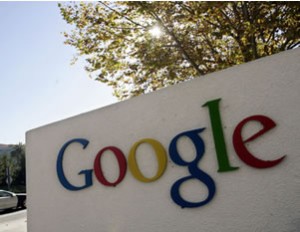
Reports of Gmail’s demise, it seems, have been greatly exaggerated. After a spring that saw at least three prominent universities move away from Google’s free hosted eMail and applications, technology officials at Brown University will expand the use of these tools beyond its undergraduates this summer after faculty clamored for the services over the past year—a move that could save the university $1 million annually.
The Ivy League university in Providence, R.I., launched the free Google Apps for Education for its 6,000 undergraduates last academic year—a migration that made students “happy,” “productive,” and “excited,” Brown’s IT director of support services, Geoff Greene, wrote in a June 29 post on Google’s official blog.
“And then some people got jealous,” Greene wrote.
So starting in the fall, about 7,000 faculty, staff, medical, and graduate students will have access to Brown’s Google Apps for Education, and the university will deploy “Google guides”—school staff members and student volunteers—to help new users transition to Google Apps.
The university also hosts a web site, Training.Brown.edu, which lists workshops for everyone who will have access to the Google tools in the upcoming academic year.
Faculty members, staff, and graduate students are invited to a July 8 workshop, for example, that will cover Gmail and Google Calendar basics, including how to check for calendar availability and schedule events.
The company’s application toolbox includes Gmail accounts that have up to seven gigabytes of storage, or about 30 times the storage capacity of Brown University’s previous eMail system, Greene wrote in his blog post.
Google Apps for Education also features integrated calendars that help students keep track of classes and campus events, Google Sites that allow multiple students to work on the same web page from different locations, and web-based applications that can be accessed via mobile devices such as the iPhone or BlackBerry.
Students’ trust that Google’s applications would be useful for educational purposes, Greene wrote, persuaded Brown officials to make the switch to Gmail and the company’s applications.
“Our students were really the ones that led us down the Google path,” he wrote. “They knew these tools would work because they already used them in their non-school lives.”
The cloud-based eMail system has appealed to many college students since Google launched its campus Gmail pilot in 2004, and Google officials maintain that colleges continued to adopt Gmail even as news reports circulated this spring documenting how some schools had second thoughts about using the system.
More than 8 million K-12 and college students use Gmail and Google Apps, according to the company. The service is free for schools and colleges and also can save on maintenance costs, because Gmail and applications are hosted at one of Google’s data centers instead of campus servers.
Yale University’s switch to Google’s eMail system was delayed in March when faculty members and administrators said they were concerned with the security of cloud computing, in which school eMail messages would be stored on off-campus servers. Some Yale faculty also expressed concern with Google’s large carbon footprint, caused by its many energy-intensive data centers.
The University of California Davis ended a Gmail pilot program for faculty and moved its 30,000 student off of Google Apps in May, citing similar security concerns.
UC Davis technology officials, including CIO and Vice Provost Peter Siegel, said in a letter to faculty that “outsourcing eMail may not be in compliance with the University of California Electronic Communications Policy,” adding that faculty who participated in a Gmail pilot said the campus’s commitment to privacy was “not demonstrated by Google and that the appropriate safeguards are neither in place at this time nor planned for the near future.”
The University of Massachusetts joined the anti-Gmail fray in May when IT officials there said they would completely phase out the eMail service, along with Google Apps such as Docs, Calendar, and Sites. UMass officials cited low adoption rates among students since Google services were made available through the university at the start of the fall 2009 semester.
Only 7 percent of UMass’s 20,000 undergraduate students switched from the university’s eMail system to Gmail, according to published reports and a university spokesman who confirmed those numbers.
Google doesn’t track the number of colleges and universities that use Gmail, but Obadiah Greenberg, a spokesman for the company, said there are thousands of K-12 schools and college campuses using the service today. And many schools report major budget savings.
California State University’s Fullerton campus saved $160,000 this year by changing over to Gmail after the campus was hit with a 24-percent budget reduction at the start of the academic year. Vanderbilt University reportedly saves $750,000 annually by using Gmail.
Other prominent schools that have transferred student and faculty eMail services to Google’s servers include Northwestern University, Villanova University, Case Western University, and Notre Dame.
“Any time someone doesn’t like a Google product, we care, and we reach out … to understand how we can improve our products,” Greenberg said. “I think there are a couple of stories that caught some attention, but they’re relatively small compared to the bigger story, which is millions of students using our apps.”
- Research: Social media has negative impact on academic performance - April 2, 2020
- Number 1: Social media has negative impact on academic performance - December 31, 2014
- 6 reasons campus networks must change - September 30, 2014
